If you like electronics, you may have heard of oscilloscopes. It might be confusing to understand what the two parameters – bandwidth and sample rate – mean. In this blog post, we explain these two parameters and how they affect your measurements.
We can answer questions like “What is the difference between bandwidth and sample rate?” or “How does each parameter affect my measurements?”. If you want to know more about oscilloscope measurements, keep reading.
You’ll get lots of answers that will help you make a good decision when buying or setting up your equipment.
Bandwidth vs. Sample Rate
The sample rate tells you how often the signal will be measured in a certain amount of time. A faster sample rate means you can get more details about the signal.
To explain the difference between two parameters, think of a sine wave. To measure it, you use something called an oscilloscope.
A wider bandwidth will capture more of the higher-frequency parts of the sine wave and give you more accurate measurements. [1]
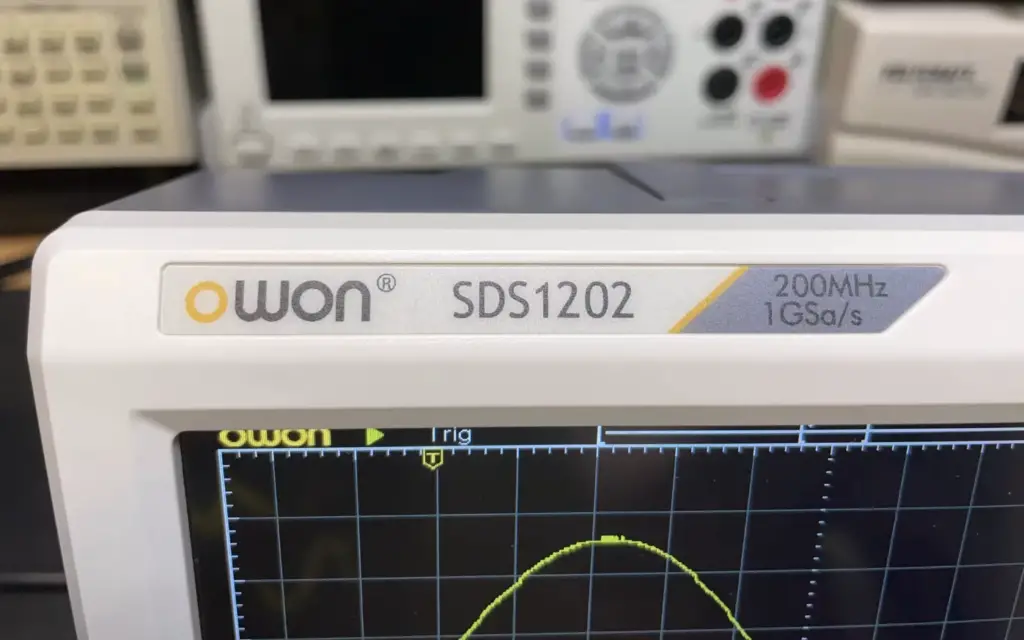
Periodic Waveforms
For periodic waveforms like sine waves, the bandwidth and sample rate are important when measuring. The bandwidth tells you how much of the higher-frequency components will be measured accurately and the sample rate tells you how often the signal will be measured in a given time.
To measure an AC signal that goes up to 1 million times a second, you need an oscilloscope with a bandwidth of at least one million times a second.
The sample rate is how often it measures the signal. A slower sample rate might work for slow signals but faster rates are needed for fast signals.
Sub-Sampled Waveform Capture
Sub-sampled waveform capture is when you measure a signal with a slower sample rate. This is useful if you do not need the most accurate measurement, but still want to know what it looks like. It also helps save money on buying expensive equipment.
To understand the difference between bandwidth and sample rate, you need to know that bandwidth affects how accurately you measure higher frequency components of a signal whereas sample rate affects how often the signal is measured in a given amount of time.
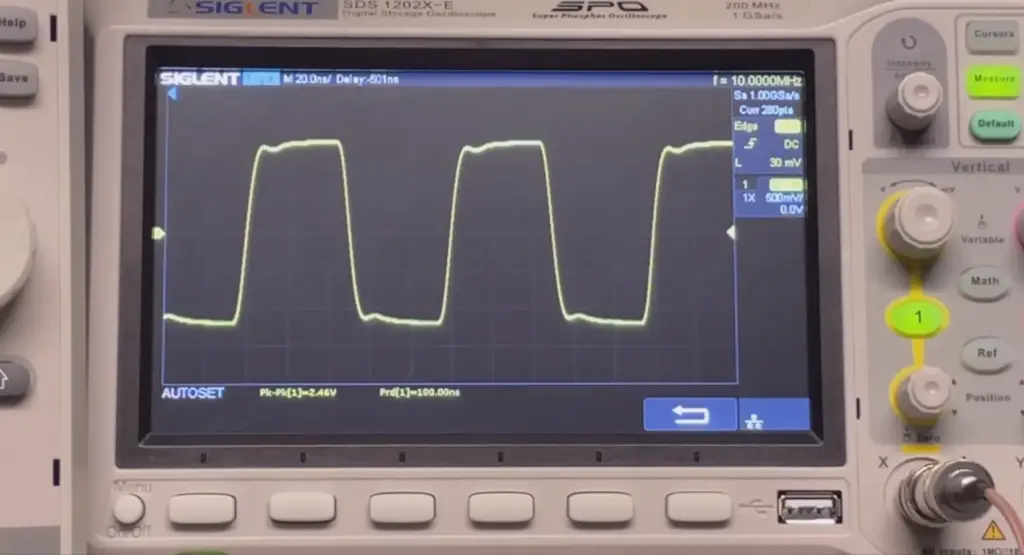
What’s the Catch?
You need to think about two things when measuring AC signals. It is important to have a bandwidth that is high enough so you get accurate readings of the high-frequency parts.
But if the sample rate isn’t fast,
then your readings will be wrong. Also, if your oscilloscope doesn’t have a wide enough bandwidth, then the faster sample rate won’t help either.
A Sub-Sampling Example
If you need to measure an AC signal that is 30kHz, you need an oscilloscope with a bandwidth of 100kHz. If your sample rate is too slow, sub-sampling can help make sure it captures all the details of the signal.
Sub-sampling helps you save money and time. You don’t need to buy a new oscilloscope that has a higher sample rate or bandwidth. It is useful if you want to get accurate measurements but don’t have much money or time.
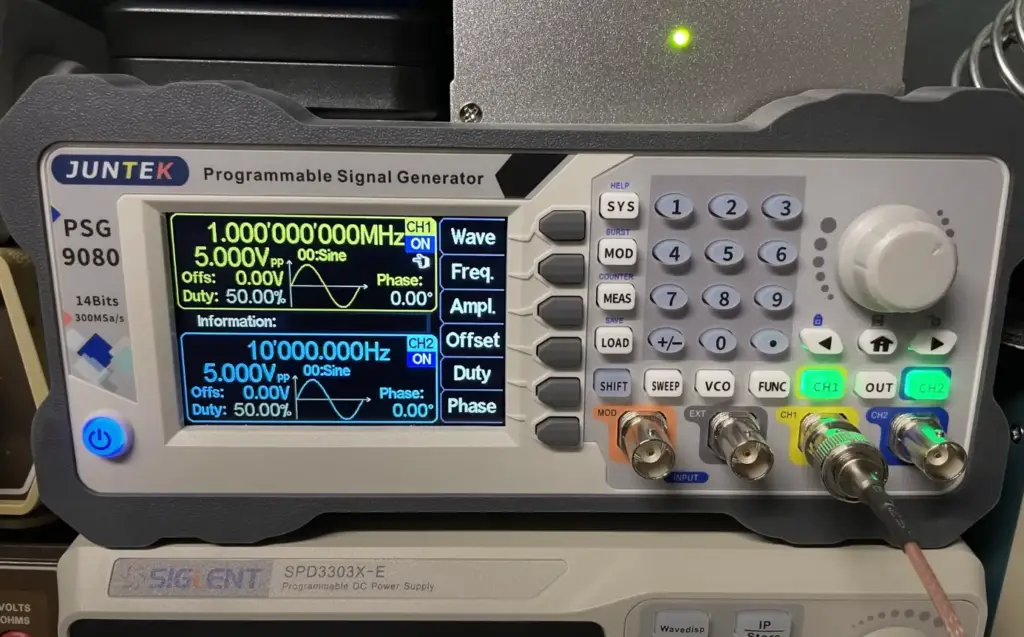
Oscilloscope Analog Bandwidth
Measuring Analog Signals
Measuring analog signals can be difficult. You need to have a good understanding of the parameters that affect your measurements – bandwidth, sample rate and sub-sampling.
Measuring Digital Signals
Digital signals are easier to measure than analog signals. They can be sampled at a much lower rate and don’t require as high of a bandwidth or sample rate.
But they still need an oscilloscope with enough bandwidth and sample rate to capture the signal accurately. [2]
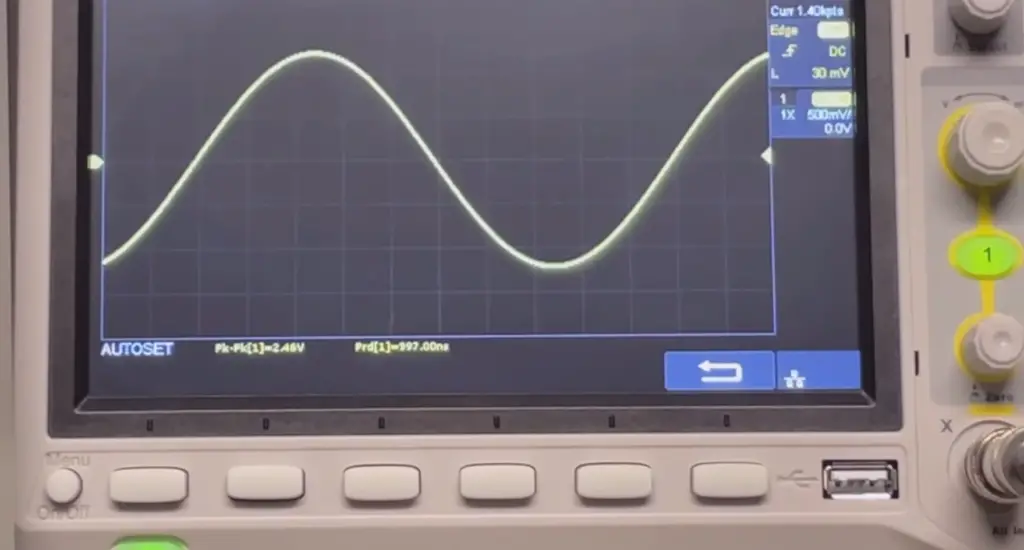
The Disadvantage of Excessive Scope Bandwidth
When you buy an oscilloscope, the more expensive it will be if it has a higher sample rate or bandwidth.
But this won’t make your measurements better if you don’t need a high sample rate or bandwidth. So think about what you need before spending money on an oscilloscope.
It’s important to understand the differences between bandwidth and sample rate for measuring AC signals.
Find a combination that gives you good results, but doesn’t cost too much money or time. Having too much of either won’t make your measurements any better, so be sure to know what you need before buying anything.

FAQ
What is the difference between bandwidth and sample rate oscilloscope?
Bandwidth is the maximum frequency range of an oscilloscope that can accurately measure signals. Sample rate is how often the signal will be measured in a given time.
What are periodic waveforms?
Periodic waveforms are AC signals that repeat with regularity, such as sine waves, sawtooth waves, and square waves.
What is sub-sampling?
Sub-sampling is when you measure a signal with a slower sample rate than what it needs to capture all the details of the signal accurately. This can help reduce cost if you don’t need the most accurate measurements.
How do I choose an oscilloscope with the right bandwidth and sample rate?
You need to think about what type of signals you are measuring and how accurate they need to be. If it is an AC signal, the sample rate and bandwidth should be able to cover the frequency range.
Digital signals might not need as much detail so a lower sample rate could work. It depends on your needs and how much money you have.
Can I use sub-sampling to save money?
Yes, you can use sub-sampling to save money if you don’t need the most accurate measurements. It can allow you to measure a signal with a slower sample rate than it needs and still capture all the details of the signal accurately.
Make sure that your oscilloscope has enough bandwidth to cover the frequency range before using sub-sampling.
Is bandwidth the same as sampling frequency?
No, bandwidth and sampling frequency are not the same.
Can I measure digital signals with an oscilloscope?
Yes, you can measure digital signals with an oscilloscope. However, you will need an oscilloscope with a sample rate that is fast enough to capture all the details of the signal accurately.
Digital signals don’t require as high of a sample rate or bandwidth as AC signals, so it can help save money if needed.
What does the sample rate mean on an oscilloscope?
The sample rate on an oscilloscope is how often the signal will be measured in a given time. This should be high enough to capture all the details of the signal accurately, so it depends on your needs and type of signals you are measuring.
Can I measure AC signals with an oscilloscope?
Yes, you can measure AC signals with an oscilloscope. You will need your oscilloscope to have a sample rate and bandwidth that are able to cover the frequency range of the signal you are measuring.
Are there any other factors I should consider when choosing an oscilloscope?
Yes, you should also consider the resolution of the display, as well as its memory depth. The resolution determines how much detail is shown on the display, while the memory depth affects how long of a signal you can capture in one go.
Additionally, make sure that your oscilloscope is compatible with any additional equipment or software you might need to use.
What does oscilloscope bandwidth mean?
Oscilloscope bandwidth is the range of frequencies that the oscilloscope can accurately measure. You should make sure that your oscilloscope has enough bandwidth to cover the frequency range of the signal you are measuring.
What is the difference between bandwidth and frequency?
Bandwidth is the range of frequencies that an oscilloscope can accurately measure, while frequency is how often a signal will be measured in a given time.
Bandwidth and frequency are both important when measuring AC signals, but digital signals don’t require as much detail so a lower sample rate could work.
What should I look for in an oscilloscope?
When choosing an oscilloscope, you should look for one with a sample rate and bandwidth that are able to cover the frequency range of your signal. You should also consider the resolution of the display, as well as its memory depth.
Additionally, make sure that your oscilloscope is compatible with any additional equipment or software you might need to use.
Can I measure analog signals with an oscilloscope?
Yes, you can measure analog signals with an oscilloscope. You will need your oscilloscope to have a sample rate and bandwidth that are able to cover the frequency range of the signal you are measuring.
Can I use sub-sampling with an oscilloscope?
Yes, you can use sub-sampling with an oscilloscope. Sub-sampling allows the oscilloscope to have a slower sample rate than it needs and still capture all the details of the signal accurately.
Make sure that your oscilloscope has a bandwidth that can cover the entire frequency range of the signal you are measuring.
Is there any other equipment I should consider when using an oscilloscope?
Yes, you should also consider any additional equipment or software that you might need to use with your oscilloscope. Make sure that these are compatible with your oscilloscope before making a purchase.
Additionally, if you plan on doing any long-term measurements, you should consider buying a scope keeper or an isolation amplifier.
What is the best way to measure high frequency signals?
The best way to measure high frequency signals is to use an oscilloscope with a sample rate and bandwidth that are able to cover the entire frequency range of the signal you are measuring.
How can I ensure accurate measurements?
To ensure accurate measurements, you should make sure that your oscilloscope has a sample rate and bandwidth that are able to cover the frequency range of the signal you are measuring.
Additionally, you should consider the resolution of the display, as well as its memory depth when choosing an oscilloscope. Finally, any additional equipment or software you might need should also be compatible with your oscilloscope.
How can I make sure my oscilloscope is working properly?
To ensure that your oscilloscope is working properly, you should check the calibration regularly.
Additionally, you should consider using a scope keeper or an isolation amplifier if you plan on doing any long-term measurements. Finally, it’s also important to periodically check the accuracy of the signals being measured.
How can I analyse signals with an oscilloscope?
To analyse signals with an oscilloscope, you should look at the waveform of the signal and measure its characteristics such as frequency, amplitude, rise time, fall time, phase shift, etc.
Additionally, you can use mathematical functions to find more detailed information about the signal.
Finally, some oscilloscopes also have built-in features such as automatic measurements or FFT (Fast Fourier Transform) analysis, which can be used to analyse signals more quickly.
Which oscilloscope is best for me?
The kind of oscilloscope you need depends on the signal you want to measure. If it is an analog signal, make sure your oscilloscope has a sample rate and bandwidth that fits the frequency of your signal.
Check if any extra equipment or software works with your oscilloscope. Digital signals usually need a different type of oscilloscope because they have higher frequencies. Finally, think about the resolution and memory depth when choosing an oscilloscope.
Which oscilloscope should I buy?
The kind of oscilloscope you need depends on the type and frequency of the signal you want to measure. Make sure that your oscilloscope has a sample rate and bandwidth that can cover the entire frequency range, as well as any additional equipment or software that might be necessary.
Additionally, consider the resolution and memory depth when choosing an oscilloscope. Finally, it’s important to make sure that any additional equipment or software you might need is compatible with your oscilloscope.
Does the bandwidth affect sample rate?
Yes, the bandwidth of an oscilloscope affects its sample rate. If the bandwidth is higher, then more samples per second can be taken. This allows for a more accurate measure of the signal being measured.
On the other hand, if the bandwidth is lower than what’s needed to cover all frequencies in a signal, then the signal will be limited to a lower sample rate. Additionally, if the bandwidth is too low, some frequency components of the signal may not be captured at all.
Do I need a scope keeper?
In many cases, a scope keeper is not necessary. However, if you plan on doing any long-term measurements with your oscilloscope, then it is advisable to use one in order to ensure accuracy and stability of the signal being measured.
Additionally, an isolation amplifier may also be needed in order to reduce interference from external sources.
Does oscilloscope size matter?
In general, the size of an oscilloscope does not have a significant effect on its performance. However, larger oscilloscopes tend to have better visibility, more memory depth and higher sampling rates.
As such, if you need a more accurate measure of your signal or require more detailed analysis, then it may be worth getting a larger oscilloscope.
Do I need a specialised oscilloscope for FFT analysis?
No, you do not necessarily need a specialized oscilloscope for FFT analysis. Many modern oscilloscopes come with built-in features such as automatic measurements and FFT analysis which can be used to analyse signals more quickly.
However, if the frequency of your signal is higher than what the oscilloscope can handle, then a specialized model may be necessary.
Can I connect my oscilloscope to a computer?
Yes, most modern oscilloscopes can be connected to a computer. This allows for data analysis and viewing of the signal on the computer monitor. It also enables you to store and share your measurements with others.
Additionally, some oscilloscopes also come with software that enables more detailed analysis of the signal.
Useful Video: Oscilloscope Bandwidth and Sample-Rate Explained with Test
Conclusion
It is important to choose the right oscilloscope with the right combination of bandwidth and sample rate. This will help you get correct results. Make sure to choose a scope with more bandwidth than the frequency of your signal.
When you measure something, use a sampling rate that is 4 times higher than the highest frequency of your signal. This will help you get an accurate picture of the signals when using an oscilloscope.
It is important to know about oscilloscopes, the sample rate and bandwidth. This will help you get the best results from your device. Start learning more today! It will be helpful.
References
- https://ez.analog.com/adieducation/university-program/b/blogs/posts/bandwidth-vs-sample-rate-and-the-adalm1000
- https://www.allaboutcircuits.com/technical-articles/understanding-digital-oscilloscope-sample-rate-analog-bandwidth/





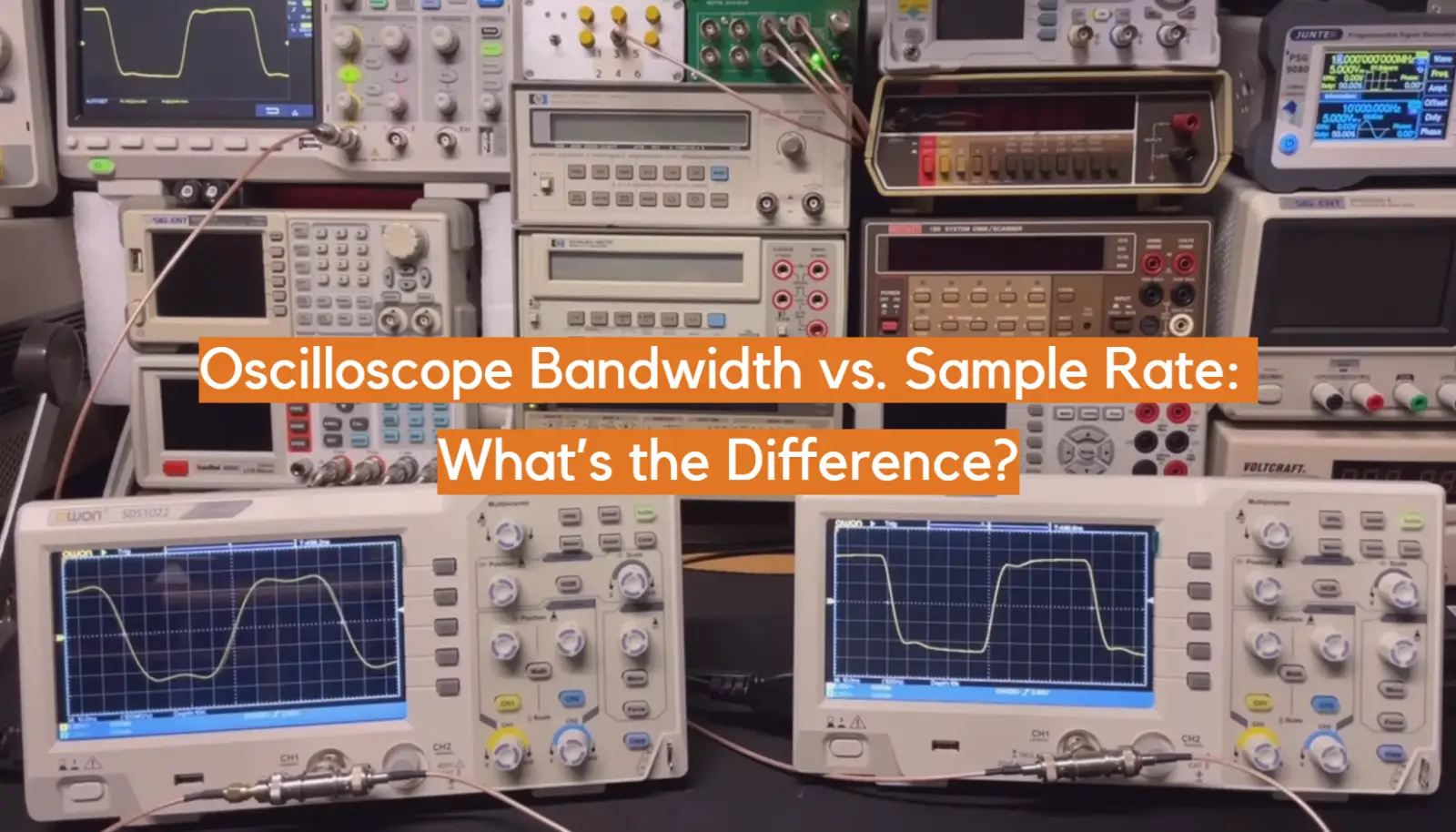








Leave a Reply